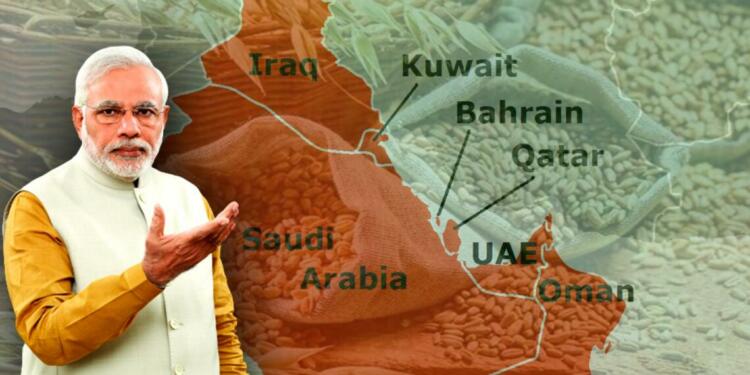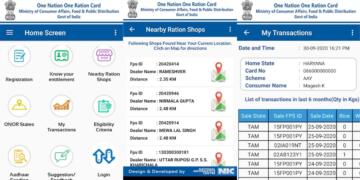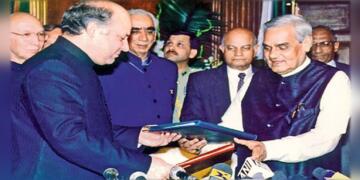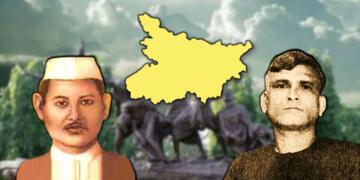West Asia is quite a peculiar place for humans to live. The area is considered as one of the most prosperous in modern world. However, the prosperity in the region is only recent phenomenon. Throughout its history, the area has been mired by infighting among various tribal groups. Sympathisers of these fanatics blame it on political and religious differences. But the fact of the matter is that deep down, ensuring food supply for future generations is the main reason behind any tribal warfare.
West Asia is a drought prone region
West Asia’s road to prosperity opened only when the world started to depend on oil-driven energy. The oil reserves opened the floodgates for investment in the region. Given the fact that the region became key oil supplier for the rest of the world, the tribal warfare subsided for a brief period and the region started to prosper on the petrodollar earning. However, the region’s poor geography made it next to impossible to survive without food imports. The area is arid and subject to drought. Only 2 per cent of the region falling in member states of Gulf Cooperation Council (GCC) is arable.
That is why the region has to buy food from outside. Deepening on the climate, the region imports anywhere between 80 to 90 per cent of its required food stock. Media reports may not tell you much, but official statistics do tell us how much these countries are dependent on India’s food produce.
West Asia imports Indian food
India provides almost everything available on a meal plate in West Asian countries. These countries not only avail food grains like Rice, Maize and wheat from India, but they also need India for fruits, dairy products, processed vegetables, cereals, onions among other items
Indian rice is in huge demand in the region, especially during the month of Ramzan. It includes both basmati as well as non-basmati rice. In Financial year, 2020-21, India exported nearly 24,00,000 metric tonnes of rice to the region. Talking about wheat, in the same ffinancial year, the West Asian countries availed 2,82,678 metric tonnes of wheat from us. India also supplied 50,325 metric tonnes of maize to the region.
Export of APEDA Products(Region Wise)
Region: West Asia- GCC
Year: 2020-21 Qty In MT Value in Rs. Lacs
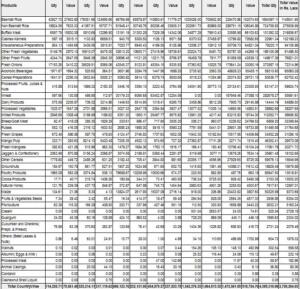
Their ‘growth’ is dependent on India
West Asia’s dependency on India for its protein requirement is also one of the big reasons they cannot afford to antagonise us for long. In FY 2020-21, India exported 51,495 metric tonnes of pulses to West Asia. More protein requirements were met through 59,576 metric tonnes of other cereals produced in India. Talking about non-veg sources of protein, even in this arena, the area which produced biggest barbarians in history is now dependent on India.
In the same FY, India exported 58.97 metric tonnes of processed meat to the region. Similarly, Buffalo meat worth $297.78 million were exported by India. Ship and goat meat accounted for 6,859.20 metric tonnes of India’s exports to the war torn region.

Besides aforementioned major sources of nutrients, people also require some micronutrients through fruits, vegetables, dryfruits, poultry products, dairy products among others. India has left no stone unturned in facilitating these sources as well. Food products such as fresh vegetables, fresh Fruits, onions, processed vegetables, grapes, mangoes, jaggery, groundnut, cucumber, walnuts and many other products are also key components of India’s food export basket to the region.
West Asia can’t do without India
Individually speaking, Saudi Arabia was the biggest importer of India’s food produce in the year. It imported 15,42,276.22 metric tonnes of food in the year. UAE with 14,72,561.08 metric tonnes is a close second. Qatar, Oman, Kuwait and Bahrain are other major importers of India’s food produces. In total, India exported 4,389,310.10 metric tonnes of food to the region encompassing Gulf Cooperation Council in FY 2020-21.
Read more: Once Pakistan’s guardian angel, Saudi Arabia is now a major partner of India
To put it in simple terms, West Asian countries start their morning with the tea served with Indian milk and sugar. During their lunch, they eat Indian food grains. At night, they rely on India for their dinner and other recreational food items. In fact the region is so dependent on India that during the times of Covid, the countries in the region had resorted to emergency measures to avail food from India.
West Asia needs India rather than other way around
Now, compare that with India’s dependence on them. India is mainly dependent on these few countries for oil and gas. However, over the years, India has decreased its reliance on them to a large extent. Currently, Russia is emerging as extremely viable and more reliable alternative for both these sources of energy.
Read more: Islamic nations are not miffed at India due to Islamic reasons, the truth is oily
On the other hand, West Asian countries do not have much alternative if India decides to shun them. They can no longer boast of the USA as an ally. Similarly, the other bread basket comprising Russia and Ukraine are not in a position to feed them. In spite of so much trade inequity in favour of India, it is surprising that these countries even dared to summon Indian diplomats.
Support TFI:
Support us to strengthen the ‘Right’ ideology of cultural nationalism by purchasing best quality garments from TFI-STORE.COM.


























